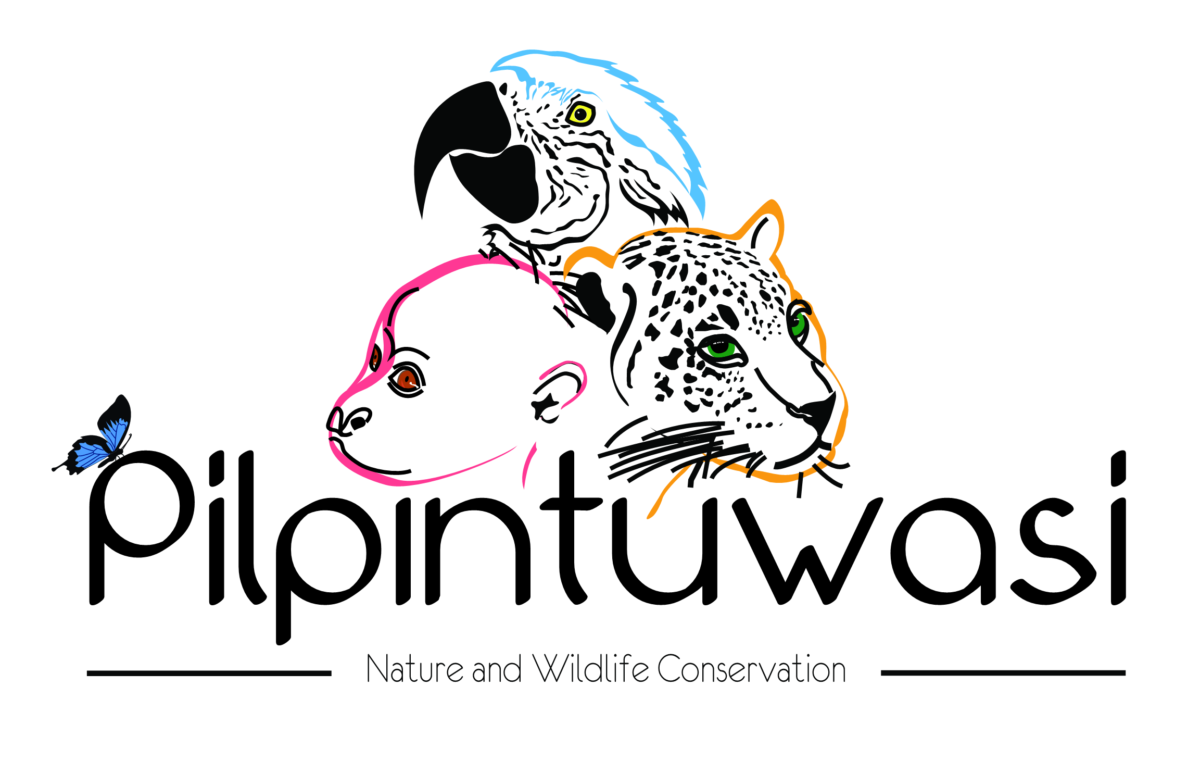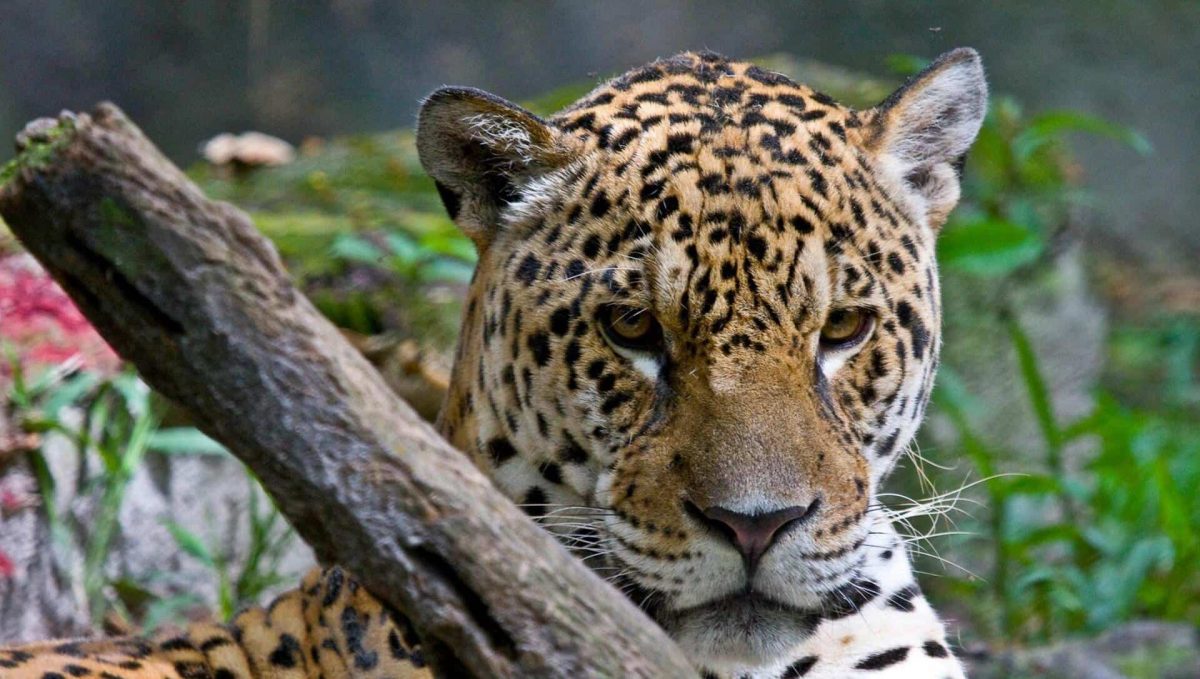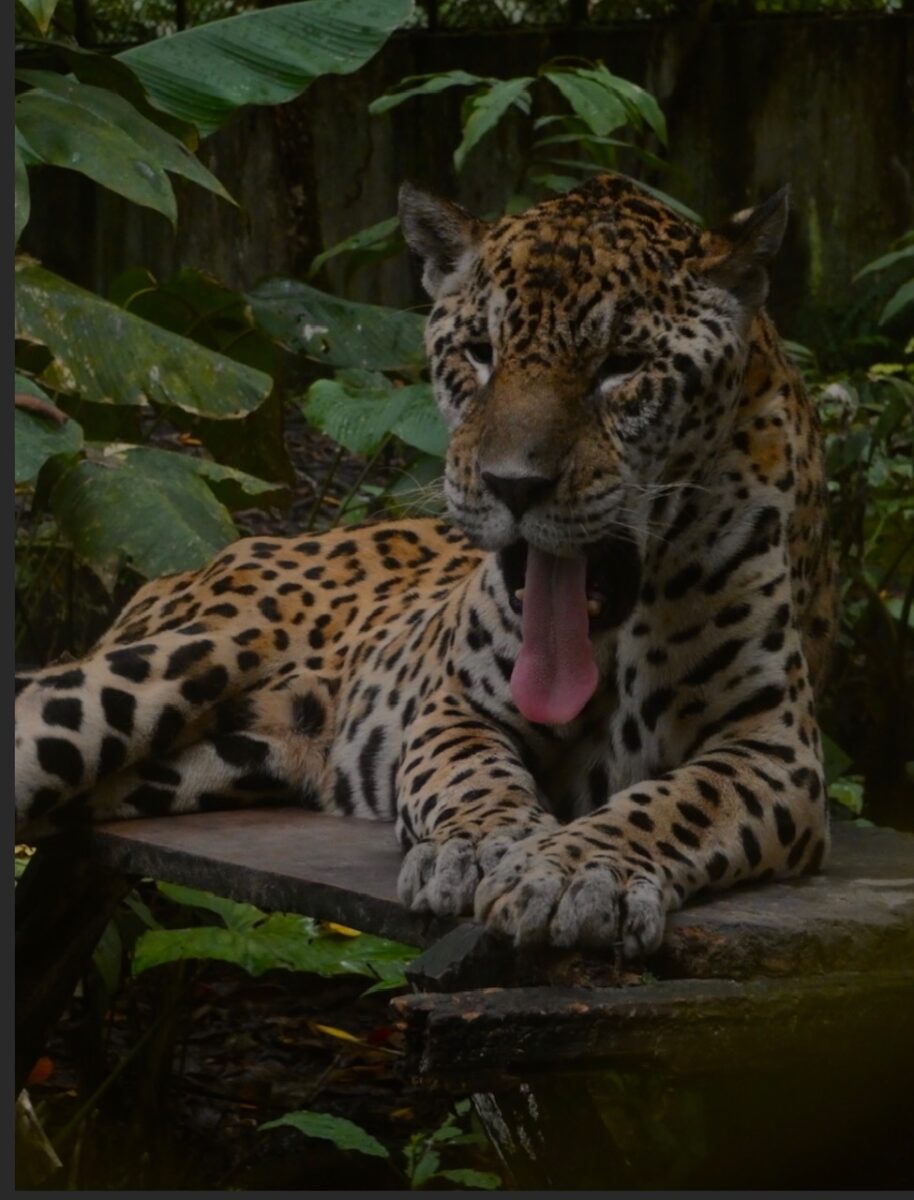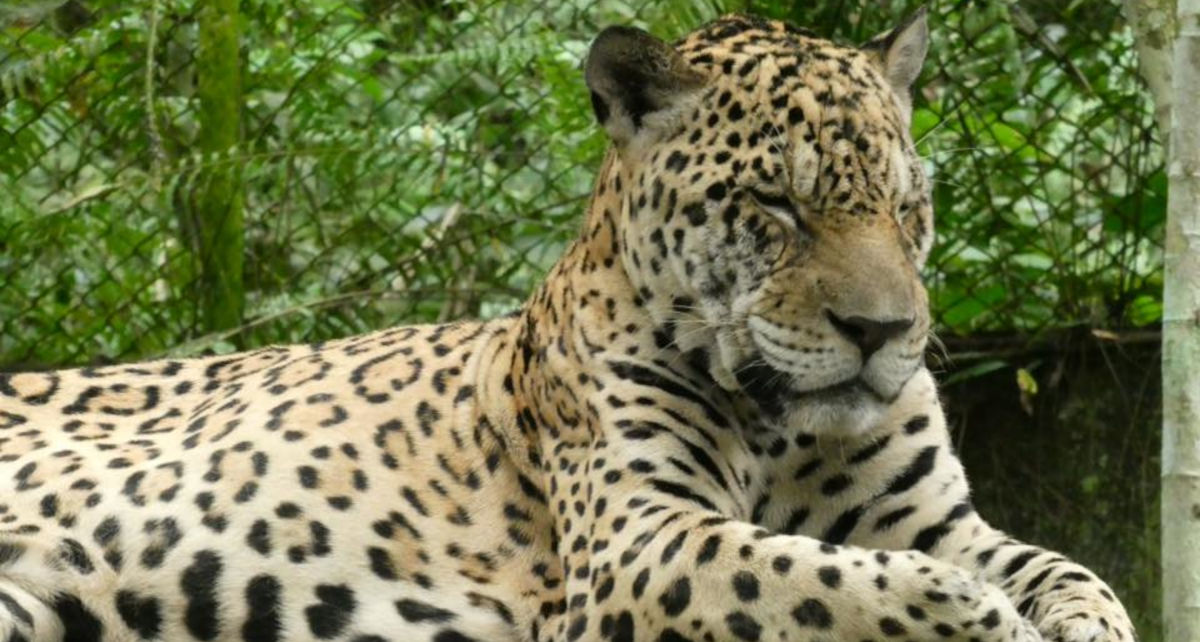ESPANOL ABAJO
Pedro – his majesty, a jaguar (Panthera Onca) and the reason for Pilpintuwasi becoming a home to rescue animals from the illegal wildlife trade. We now serve as a non-profit organization dedicated to protecting animals affected by the illegal wildlife trade.
That is right, Pedro was in fact the first animal rescue to come to the centre, which opened first as just a mariposariom – a place dedicated to the study of butterflies. It now serves as a refuge for many victims of the wildlife trade, including his highness- who is over 20 years old and could possibly be the oldest jaguar alive on earth!! Although we deeply wish he could return to the wild- we could never gain permits to rehabilitate him as his habituation to human activity would put him at risk of being hunted easily.
We try to ensure Pedro lives his best life possible in our captive care. It is not ideal and no cage will ever suffice for a jaguar. A male jaguar in the wild has a home range between 19 to 53 square miles. Wild cats should never be pets. Trending social media posts of people and exotic pets are increasing the demand as it influences others to want a new pet, thus furthering wildlife trafficking. Please, make a difference, and don’t interact with these posts – help educate others that these animals belong in the wild!
Pedro is given enrichment to help stimulate him – this includes scent posts, feathers, a simple card box (which all cats love!), frozen meat, or a tire swing! He is also supported by his wonderful Godmother “Roxie”, who has helped Pilpintuwasi care for Pedro, aiding us in his huge meat intake a day with regular donations- we are extremely grateful for her generosity and kindness. So is Pedro, who eats a staggering 4 kg of meat per day- due to his age we ensure he gets the best cuts and crushed bones. In the wild, broken canines for a jaguar would mean certain death as they’re invaluable for the specific hunting method jaguars use. death,
Jaguars have a more powerful bite than any other big cat. Their teeth are strong enough to bite through the thick hides of crocodilians and the hard shells of turtles. They need powerful teeth and jaws to take down prey three to four times their own weight – usually killing it with a bite to the back of the skull rather than biting the neck or throat like other big cats. Jaguars stalk and ambush their ground-dwelling prey at night, instead of chasing prey like cheetahs and lions do. One of the jaguar’s most successful hunting techniques is to climb into a tree and wait for prey to pass below.
Unfortunately, the jaguar population in the wild is rapidly decreasing! The jaguar once roamed from Argentina in South America all the way up to the Grand Canyon in Arizona. Today, jaguars have been almost completely eliminated from the United States and are endangered throughout their range. Although they are protected in all their home territories, they face tremendous threats from illegal hunting (mainly for bones and teeth to be used as cultural medicine) and changes in land use for agricultural activities. We need to begin to value our forests, globally, which we all depend on. We need to protect areas of high biodiversity, through protection enforcement and putting pressure on governments to support indigenous communities and protect land from agricultural takeovers.
Did you know? Jaguars can be “melanistic”, where they appear almost black. Melanistic jaguars (and leopards) are known as “black panthers”.

ESPANOL
Pedro – su majestad, un jaguar (Panthera Onca) y la razón por la que Pilpintuwasi se convirtió en un hogar para rescatar animales del comercio ilegal de vida salvaje. Ahora somos una organización sin ánimo de lucro dedicada a proteger a los animales afectados por el comercio ilegal de vida silvestre.
Así es, Pedro fue de hecho el primer animal rescatado que llegó al centro, que abrió primero como un simple mariposario, un lugar dedicado al estudio de las mariposas. Ahora sirve de refugio a muchas víctimas del comercio de animales salvajes, incluido su alteza, que tiene más de 20 años y posiblemente sea el jaguar más viejo vivo del planeta. Aunque deseamos profundamente que pueda volver a la vida salvaje- nunca podríamos obtener permisos para rehabilitarlo ya que su habituación a la actividad humana lo pondría en riesgo de ser cazado fácilmente.
Intentamos que Pedro viva lo mejor posible en cautividad. No es lo ideal y ninguna jaula será suficiente para un jaguar. Un jaguar macho en libertad tiene un área de distribución de entre 19 y 53 millas cuadradas. Los gatos salvajes nunca deben ser mascotas. Las publicaciones de moda en las redes sociales sobre personas y mascotas exóticas aumentan la demanda e influyen en otras personas para que quieran tener una nueva mascota, fomentando así el tráfico de animales salvajes. Por favor, marca la diferencia y no interactúes con estas publicaciones: ¡ayuda a educar a los demás para que sepan que estos animales pertenecen a la naturaleza!
Pedro recibe enriquecimiento para ayudarle a estimularse: postes aromáticos, plumas, una simple caja de cartas (¡que a todos los gatos les encanta!), carne congelada o un columpio de neumáticos. También cuenta con el apoyo de su maravillosa madrina “Roxie”, que ha ayudado a Pilpintuwasi a cuidar de Pedro, ayudándonos en su enorme ingesta de carne diaria con donaciones regulares – estamos muy agradecidos por su generosidad y amabilidad. También Pedro, que come la asombrosa cantidad de 1,5 kg de carne al día; tiene un colmillo canino roto, así que nos aseguramos de que reciba los mejores cortes y huesos triturados. En la naturaleza, los colmillos rotos de un jaguar significarían una muerte segura, ya que son muy valiosos para el método de caza específico que utilizan los jaguares.
Los jaguares tienen una mordedura más poderosa que cualquier otro gran felino. Sus dientes son lo bastante fuertes para morder la gruesa piel de los cocodrilos y el duro caparazón de las tortugas. Necesitan dientes y mandíbulas potentes para abatir presas de tres a cuatro veces su propio peso, a las que suelen matar de un mordisco en la parte posterior del cráneo en lugar de morder el cuello o la garganta como otros grandes felinos. Los jaguares acechan y tienden emboscadas a sus presas terrestres por la noche, en lugar de perseguirlas como hacen los guepardos y los leones. Una de las técnicas de caza más exitosas del jaguar es subirse a un árbol y esperar a que la presa pase por debajo.
Por desgracia, la población de jaguares en libertad está disminuyendo rápidamente. Antaño, el jaguar vagaba desde Argentina, en Sudamérica, hasta el Gran Cañón, en Arizona. Hoy en día, los jaguares han sido casi completamente eliminados de Estados Unidos y están en peligro de extinción en toda su área de distribución. Aunque están protegidos en todos sus territorios de origen, se enfrentan a tremendas amenazas derivadas de la caza ilegal (principalmente para obtener huesos y dientes que se utilizan como medicina cultural) y de los cambios en el uso del suelo para actividades agrícolas. Tenemos que empezar a valorar globalmente nuestros bosques, de los que todos dependemos. Tenemos que proteger las zonas de gran biodiversidad, mediante la aplicación de medidas de protección y presionando a los gobiernos para que apoyen a las comunidades indígenas y protejan las tierras de las expropiaciones agrícolas.
¿Lo sabía? Los jaguares pueden ser “melánicos”, es decir, parecer casi negros. Los jaguares melánicos (y los leopardos) se conocen como “panteras negras”.


